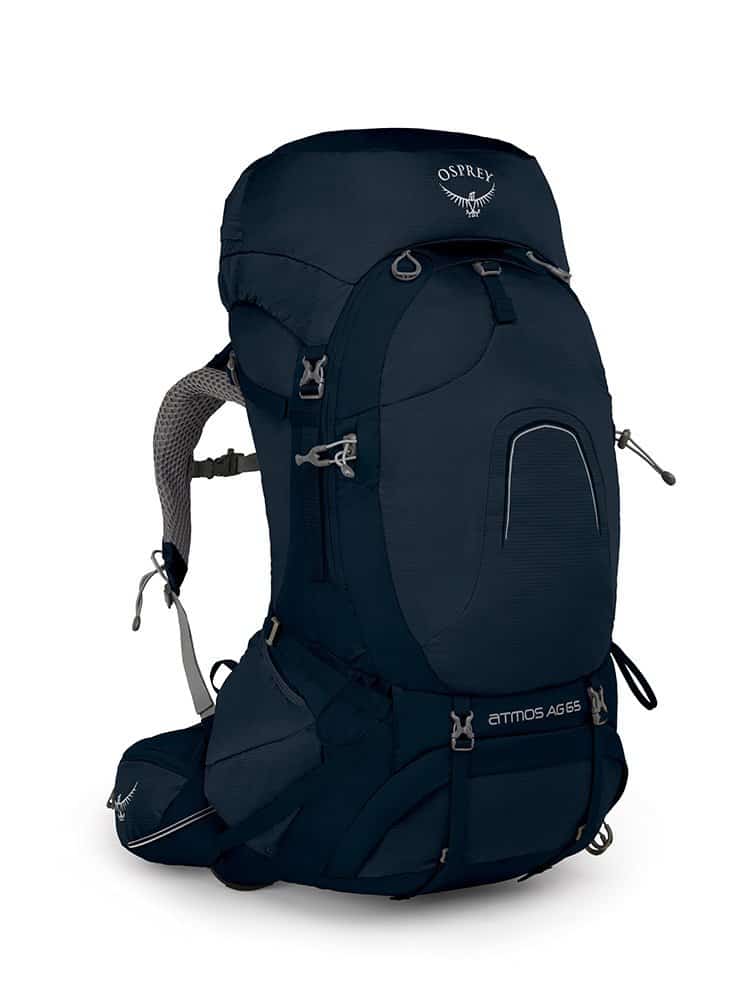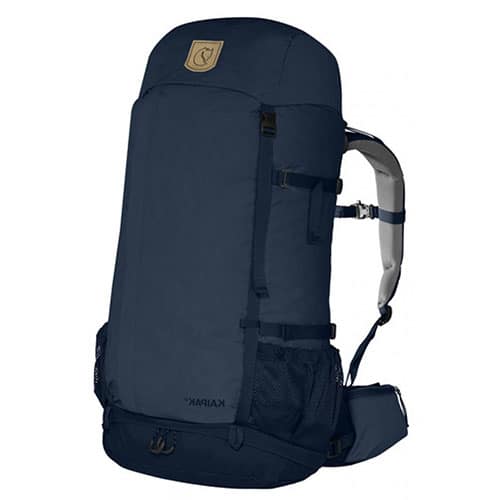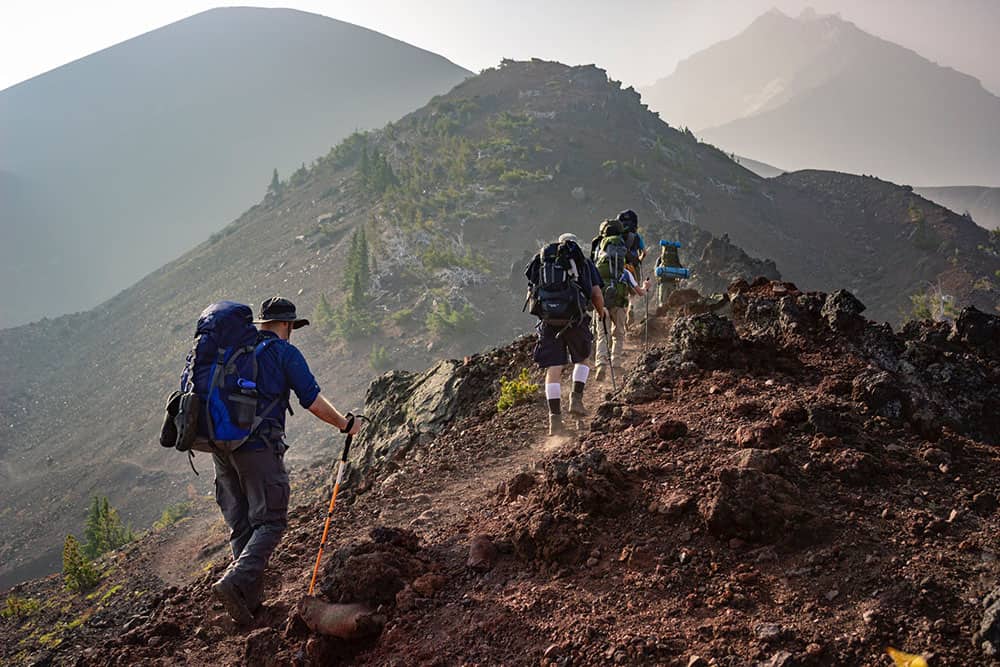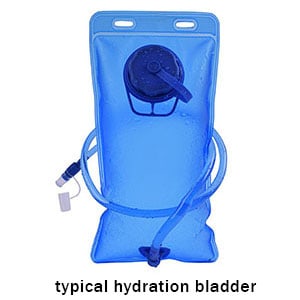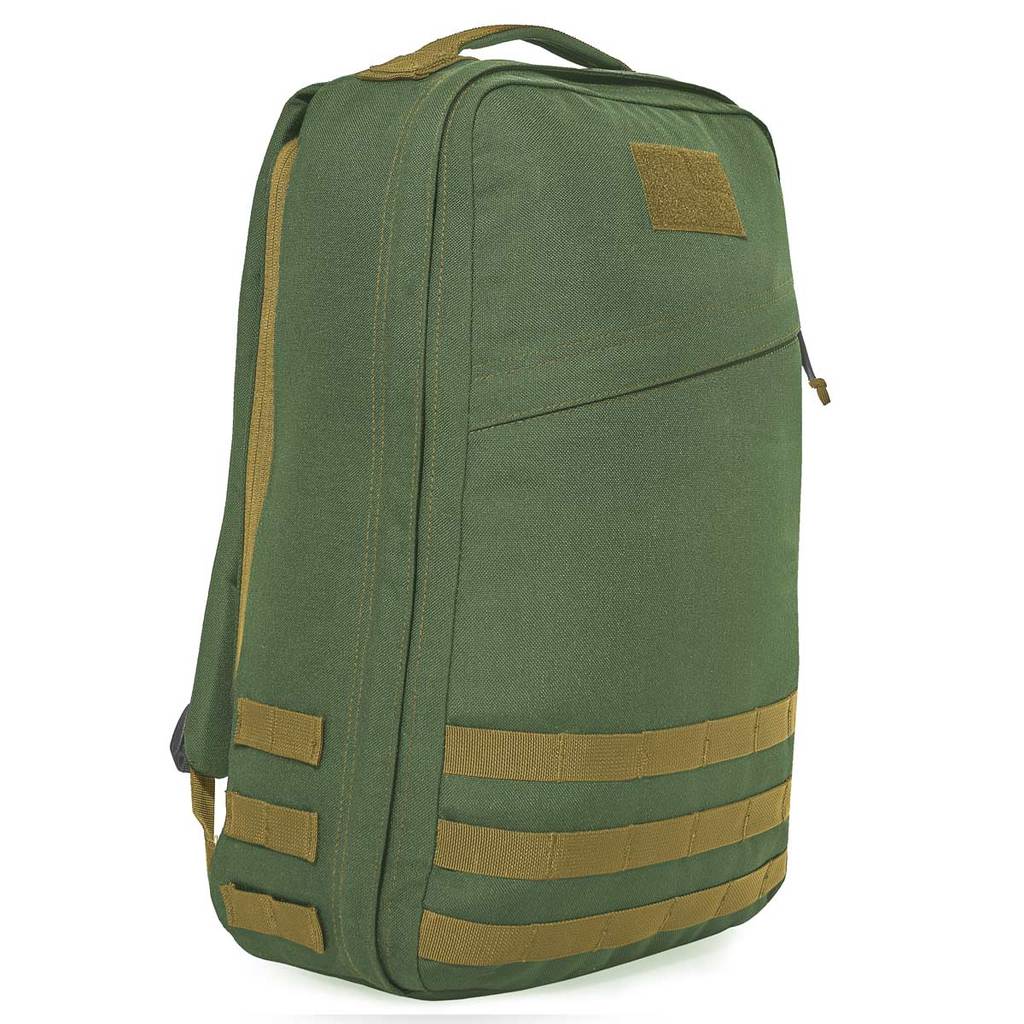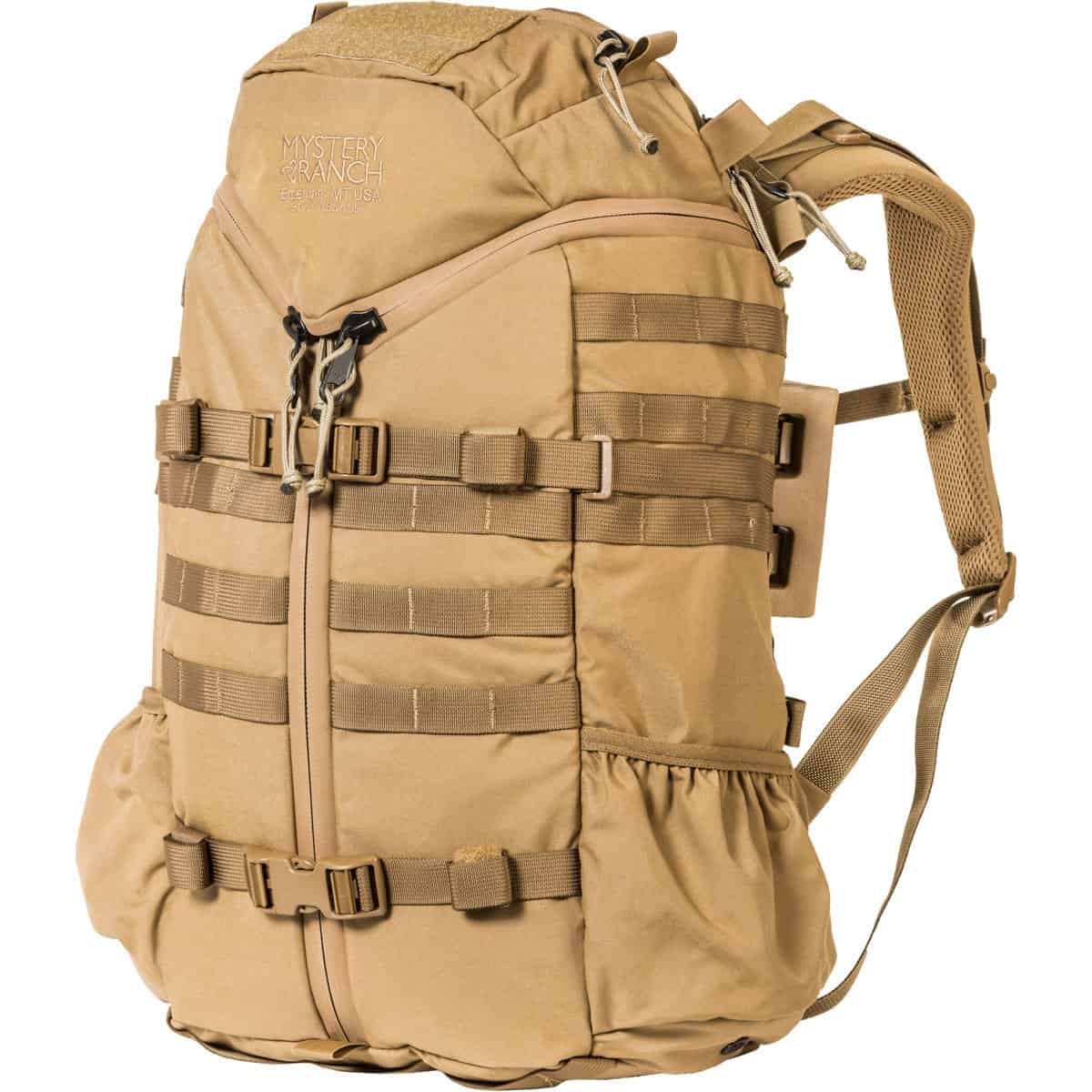A good hiking backpack is like a good hiking buddy. It goes everywhere you want to go, carries everything you need to carry, and takes a lot of the weight (literally!) off your shoulders. The best hiking backpacks help you stay organized on the trail and efficient in and out of camp.
There are many features of hiking backpacks to be considered, such as capacity, base weight, and durability of the fabric. Fortunately, brands like Osprey, Gregory, and North Face (just to name a few!) are some of the most trusted around the world when it comes to crafting high-quality backpacks.
Our list of the 10 Best Hiking Backpacks will help to simplify your choice so that you can find the best backpack to get out on the trails this summer. Our Buyer’s Guide will also go into depth about the most important factors to keep in mind when buying a new hiking backpack.
1. Osprey Atmos AG
The Osprey Atmos AG is an amazing pack for anyone interested in thru-hiking the Pacific Crest Trail or Appalachian Trail. It offers a total capacity of 65 liters and comes with Osprey’s patented Anti-Gravity suspension system, which contours to your body for a perfect without restricting your movement.
Constructed from durable nylon fabric, this Osprey pack boasts a removable top lid, dual zippered front panel pockets, side and internal compression straps, an adjustable harness, a fit-on-the-fly hip belt, and a host of additional features.
2. Gregory Baltoro
The Baltoro backpack from Gregory is another great multi-day backpacking pack with the capability and durability to handle extended treks or mountaineering expeditions. The pack offers a total capacity of 65 liters and is constructed from 210-Denier nylon and reinforced with 420-Denier HD nylon.
This pack boasts a stowable rain cover, side-mounted mesh water bottle pockets, removable shock cord ice axe or trekking pole retainers, a mesh front panel pocket, large hip belt pockets sized large enough for smartphones or other digital devices, and much more. The packs’ top-loading design with front U-zip panel makes accessibility quick and easy.
3. Teton Sport Scout 3400
The top-selling internal frame backpack on Amazon is perfect for beginners or anyone looking for a new pack for quick, 2-4 day getaways. The Teton Sport Scout 3400 offers a total capacity of 55 liters and weighs just 4.5 pounds when empty.
The pack boasts multi-position torso adjustment that fits a wide range of body types and sizes. It’s also designed with a durable, open-cell foam lumbar pad and molded channels to provide maximum comfort and airflow. Perhaps best of all, it fits both men and women and is designed for strategic, organized packing.
4. North Face Banchee
This 50-liter backpack from North Face is designed to withstand heavy loads and remain versatile enough for any type of adventure. For the intrepid adventurer looking for a new multi-day pack, the North Face Banchee is an excellent choice.
This pack offers a breathable beaver-tail pocket for drying wet gear and is constructed from 210-Denier ripstop nylon. Featuring more than 8 storage pockets, this top-loading pack with floating lid boasts a dynamic aluminum frame for superior freedom of movement and load control.
5. Granite Gear Crown2
Designed specifically with the ultralight hiker in mind, the Granite Gear Crown2 is another excellent pack for anyone looking to conquer a multi-month backpacking trip. This 60-liter pack weighs just 2.2 pounds when empty, and the frame sheet can be removed to reduce that base weight down to just 1.7 pounds.
This pack features a dual density shoulder harness with load-lifter straps and removable sternum straps, in addition to dual hip belt pockets with DWR-treated (1) zippers, a roll-top main compartment opening with singular buckle for quick access and easy compression, and a removable lid with a compartment that also boasts a DWR-treated zipper.
6. Osprey Aether
What can we say? You really can’t go wrong when it comes to Osprey packs, and this one is another ultralight option that’s perfect for accompanying you on that month-long trip you’ve always dreamed of taking! This pack has a total capacity of 70 liters and offers a removable top-lid that converts to a daypack for side excursions.
This pack also features an internal hydration reservoir sleeve, Stow-on-the-Go™ trekking pole attachments, zippered hip belt pockets, a large stretch mesh front panel pocket, dual front compression straps with StraightJacket compression, and much, much more.
7. High Sierra Titan
High Sierra comes in at our #7 spot with a monster of a pack designed for serious outdoor enthusiasts. This pack has a total capacity of 55-liters and offers the perfect mix of comfort, technology, and style.
The Titan boasts a top-load main compartment with gusseted drawstring closure and adjustable top lid. Also included is a convenient webbing daisy chain on the front, padded grab handles on both sides, a removable media pocket on the backpack strap, a hinged front pocket with mesh side gussets to hold ropes or other gear, and a number of additional features.
8. Kelty Coyote
Kelty has been a trusted name in backpack design since 1952. The biggest pack on our list, the Coyote is designed for the multi-day backpacker that truly doesn’t want to leave anything behind. With a total capacity of 65 liters, this pack has an optimal carry weight between 20 and 50 pounds.
It features perfect fit suspension for customized comfort without hassle, an HDPE frame sheet and waist belt, mesh back panel, waist belt, sternum strap, and dual light beam aluminum stays. It’s a top loading pack with a removable top lid and front pocket with convenient organization.
9. Arc’teryx Bora AR
One of the most weatherproof packs on our list, the Arc’teryx Bora AR is a perfect pack for anyone that wants to use it in mountainous areas with high exposure to rain or snow. It has a total capacity of 63 liters, which is great for trips in the 4-7 day range.
This pack features GridLock™ shoulder straps that adjust in both width and height for an extremely customizable fit. It also boasts a ventilated back panel, Thermo-molded Tegris frame sheet and aluminum stays, RotoGlide (patent pending) hip belt, and the ability to carry two ice axes.
10. Fjällräven Kaipak 58
Fjällräven brings us this top-loading trekking pack designed for both short and long multi-day treks. With a capacity of 58 liters, the Kaipak is constructed from durable G-1000 Eco HeavyDuty (2) and includes a stowable rain cover.
The pack also features a supportive carrying system with hip belt, an adjustable top lid with two pockets, side compression straps, multiple attachment points for trekking poles or ice axes, and hydration system compatibility.
—
Buyer’s Guide
There’s nothing like a well-designed, well-built backpack to enable high-quality outdoor adventures. They enable you to safely bring more food and equipment, to organize better, and a well-balanced pack with comfortable shoulder and waist straps will allow you to be the hiker or climber you’ve always known you could be. With that in mind, let’s look at some of the things you need to consider when you’re shopping for a new hiking backpack.
Fit
Fit largely depends on your body size. Most of the packs listed above are available in different sizes or offer adjustable features that make them usable for many body types and sizes. Generally, you want to find a pack that sits snugly on top of your iliac crest (3) and hugs your body without squeezing uncomfortably into your stomach when the hip belt is tightened.
The two measurements that’ll help you when deciding which size pack to buy are your torso length and waist size. Waist size is pretty easy. Bust out that measuring tape and measure from your belly button around your back and back to your belly button.
You can find your torso length by measuring from the base of your spine (which is right in line with the top of your iliac crest) up to the base of your neck where the large bony prominence protrudes. REI’s pack sizing guide (4) is a great resource to find the pack that’s right for your body size.
The following video will provide some useful tips for getting the right fit for your hiking backpack.
Capacity
Deciding how much space you need for all your gear can be one of the most difficult parts of buying a new pack. From experience, however, we can tell you that it’s not as complicated as we often make it.
In most cases, it’ll boil down to the fact that, if you have space, you’ll use it. In other words, if you buy a 50-liter pack, you’ll find a way to fit everything you need into that space. On the other hand, if you buy an 80-liter pack, you’ll also find the extra gear to bring along and fill that space.
That said, we typically recommend a pack capacity of 20-30 liters for single day or overnight trips, a capacity of 30-50 liters for a weekend (2-3 nights) trip, a capacity of 44-55 liters for a multi-day (2-5 nights) trip, and a capacity of more than 55 liters for extended (5+ nights) trips.
Many thru-hikers, however, on the Pacific Crest Trail or Appalachian Trail actually don’t carry much larger than 40 to 50-liter packs. Over the course of a more than 2,000-mile journey, it’s actually better to be carrying less.
But in deciding how much capacity you need, it’s also a good idea to take stock of the size of your current camping gear. If your sleeping bag, stove, and tent are quite sizeable, for example, then you might actually want an 80-liter pack just for an overnight adventure.
External Vs Internal Frame
Way back in the olden days of the early 1960s virtually every hiking pack on the market had an external frame (although the market was admittedly pretty small at the time). In 1967 Greg Lowe (5) changed all that with his invention of the internal frame backpack. Lowe’s goal was to create a framing system that transferred much of the load to the hipbelt and to keep the weight in close to the body, which was hard with an external frame.
While Lowe’s internal frame backpacks have become the go-to choice for “serious” climbers there are still companies like Kelty that produce external frame hiking backpacks. Why? Because they still have certain advantages over internal frame packs. For instance, they are able to carry a heavier load, they provide superior ventilation between the pack and your back, and they’re cheaper to make and so cheaper to buy.
Internal frame packs are no slouch in the feature department either, which is why they’ve become so very popular. Besides holding the load closer in to your back they are also lighter, which is a major consideration when hiking many miles over mountainous terrain (6). Also, because they’re closer in to the body they don’t get snagged as easily on branches and bushes. And they’re typically made of higher quality materials and will last longer (the better ones anyway).
Hydration Bladder
One of the most common causes of death while hiking is dehydration. Even young, otherwise healthy individuals can succumb to dehydration if they do not bring enough water with them on their hike (7). Medical experts recommend drinking a minimum of 1 gallon of water per day when hiking, especially during the summer months.
The problem then becomes, how best to carry enough water? Drinking water bladders are an excellent solution that make it easy to stay hydrated while keeping the weight of the water solidly under control so it doesn’t throw off your balance. There are a number of packs on the market with built-in sleeves inside designed to accommodate a bladder.
Bladders are available in a variety of sizes, although carrying more than about 3 liters at a time is likely too much. You’ll be working so hard to carry all that water that you’ll be sweating at an alarming rate. The best idea then is to have a bladder that’s around 2-3 liters and to carry an inline water filter with you so you can refill the bladder from rivers or streams you run across.
Frequently Asked Questions
Backpacks have been around in one form or another for more than 100 years (8) and in that time they have undergone almost continuous modification and improvement. Here are some frequently asked questions that should help you choose the hiking backpack that’s right for you.
Is there really a difference between men’s and women’s backpacks?
This is one of the most frequently asked questions in hikerland, and the answer is “Yes”. While you may not be able to pick up on any differences by just taking a quick glance, the fact is women’s backpacks differ from men’s in a few fundamental ways.
Shoulder straps are closer together – Women in general have narrower shoulders than men. So if they’re carrying a men’s backpack it may well put too much stress on the outside of their shoulders. Women’s backpacks are designed with the shoulder straps a little closer together.
Hip belts are different – Most women have wider hips than most men. Some women have hips that are significantly wider than any man’s. The hip belt on a men’s backpack will not be designed to accommodate such wide hips. A woman’s backpack will.
Women’s backpacks are shorter – Women in general are shorter than men. They need a backpack that will accommodate their shorter torso. Women’s backpacks are designed with this in mind.
There are certainly tall women out there with wide shoulders and narrow hips and for them a man’s backpack may provide a perfect fit. The average woman, however, should seriously consider getting a hiking backpack that accommodates her particular anatomy.
How do I pack my backpack correctly?
The simplest answer to this question is that you want to start with your sleeping bag at the bottom and then insert medium weight items on top of that. The heaviest items (bear canister or food sack, typically) should go in the middle of the pack closest to your back. Around that, you can stuff smaller, lighter items. Larger, bulkier items are best strapped to the top, bottom, or sides of the pack.
The video below will give you a good idea about the fundamentals of packing for the trail.
How do I keep my backpacking gear dry in the rain?
Many packs come with stowable rain covers that can easily be thrown over your pack at the first signs of rain. If not, we highly recommend buying a rain cover that’s big enough for your pack. A little extra tip, however, is to line the inside of your pack with a thick trash compactor garbage bag.
What is the difference between a frame and frame stays?
Some of the fancier ultralight packs offer frame stays instead of a full backpack frame. Frame stays are typically one or two aluminum rods that fit into slots inside the back of a pack. The main benefit of frame stays is that they’re lighter than a full frame, but they can also be bent to customize to your body shape more easily than a full manufactured frame.
What is a backpack brain?
The brain of a backpack is also known as the top lid. This fits over the main compartment of the pack and usually offers one zippered pocket. On some packs, the brain can be detached to become a fanny or sling pack for day adventures.
How do I use the straps on the outside of my backpack properly?
The exterior straps of your pack provide attachment points for a variety of equipment. They should primarily be used for gear that’s too bulky or awkward to fit easily into the interior portion of your pack.
What gear should I always have when backpacking?
While this can obviously vary depending upon where you’re heading, how long you’ll be out for, and a number of other factors, a good ‘hiking essentials’ list includes items like a map and compass, sunscreen or sun protection, insulated clothing, a flashlight or headlamp, first aid kit, fire starter, multi-tool and/or repair kit, food, water, and shelter.
Summary
The best hiking backpacks offer the essential features without adding too much extra weight or add-ons that don’t really serve a purpose. We hope you’ve enjoyed the information in this review and we wish you the best of luck in buying your next pack!
